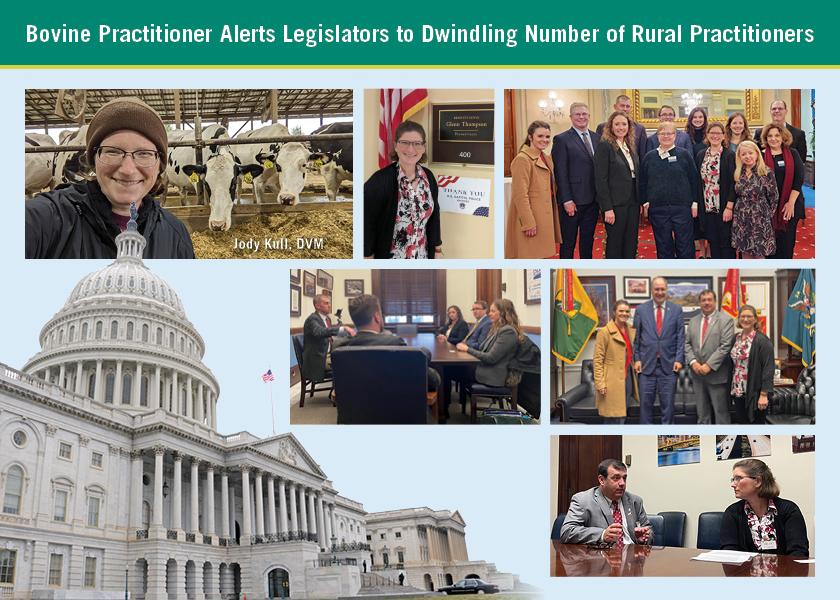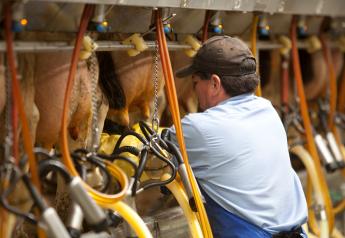Bovine Veterinarian Addresses Food Animal Practitioner Shortage With Legislators

Jody Kull, DVM and owner of Valley Mobile Veterinary Service, Danville, Pa., represented bovine veterinarians in meetings with legislators in Washington, D.C., in December. One of her goals: to bring attention to the dwindling number of veterinarians practicing in rural America today and what that means to livestock producers, pet owners and their local communities.
“There are so many legislators in policy-making that are unaware of the issues in rural veterinary medicine and rural agriculture today,” says Kull, who notes her group met with officials in 12 different offices.
“Once the issues and points were explained and shared, all were on board and understood the importance of supporting the initiatives and ideas brought forth in the Farm Journal Foundation report,” she adds.
The report she references, Addressing the Persistent Shortage of Food Animal Veterinarians and Its Impact on Rural Communities, says more than 500 counties across the U.S. have shortages of food animal veterinarians.
DECLINE IN FOOD-ANIMAL PRACTICES
Authored by Clinton Neill, an economist at Cornell University, and commissioned by the Farm Journal Foundation, the report says only 3% to 4% of new veterinary school graduates pursue livestock or other food-animal practice areas. That is a stark decline from 40 years ago when about 40% of graduates specialized in this area.
“Veterinarians really are on the front lines of disease prevention,” Kull says. “It helped to make my point that the issues were presented from someone experiencing the rural veterinary experience firsthand, and I was very proud to represent my veterinary colleagues from across the country and the National Milk Producers Federation. My follow-up emails with my state senator’s staff have all been positive, and we have future meetings set up to discuss the issue further.”
Kull says she wants to encourage other veterinarians to reach out to their senators and representatives to share their personal stories of working in rural veterinary medicine.
“I also recommend bringing this issue up with your Farm Bureau leaders and local politicians to keep the discussions moving forward,” she says. “It can be intimidating, but the veterinary network is strong, and we all need to support each other moving forward in making sure that rural agriculture continues to have veterinary support.”
Veterinarians Honored with 2023 NCBA Environmental Stewardship Award
Calf Scours and Calving Pasture Rotation
Health Advocates and Online Activists Sue FDA Over Antibiotics in Livestock
Wonder How Much Food Prices have Increased? USDA Just Shared the Numbers







